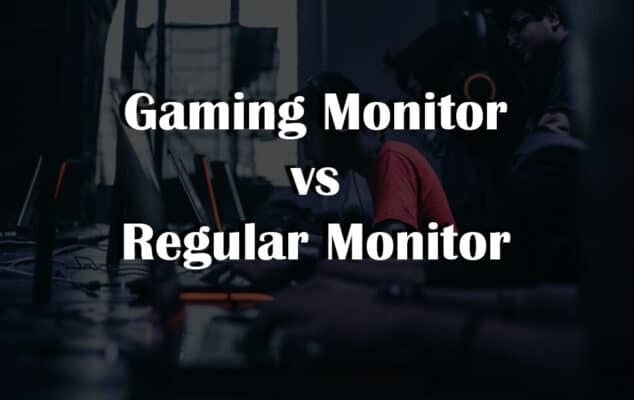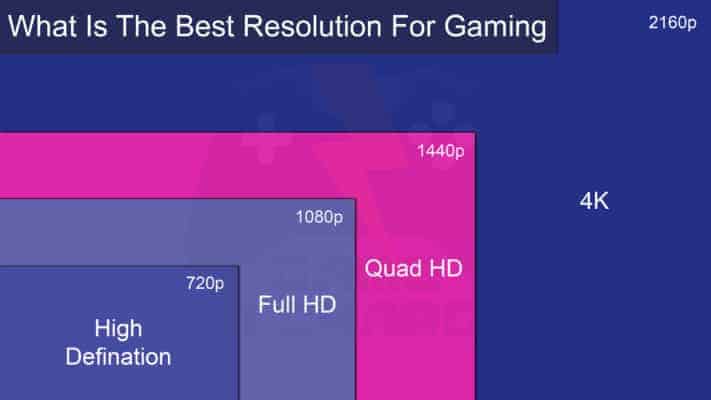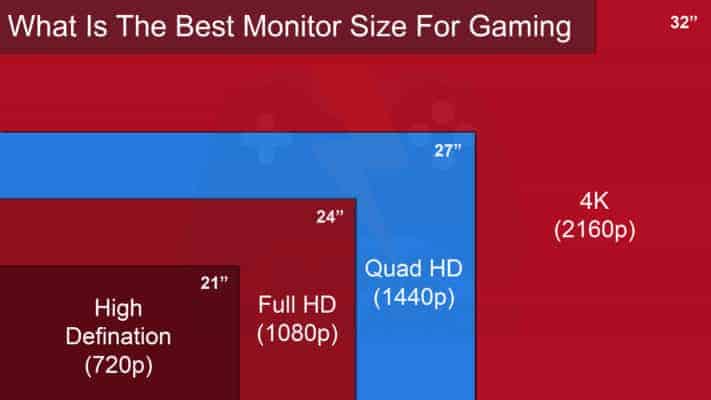You may be wondering the answer to the question of what is the difference between gaming monitor and regular monitor. When it comes to gaming, many people believe that you need to have a gaming monitor to enjoy the best experience. However, is this really the case? What is the difference between gaming monitors and regular monitors? And should you spend the extra money on a gaming monitor? In this blog post, we will answer all these questions and more. So stay tuned!
Finding the best monitor for gaming can be a difficult task. With all of the different types and features available, it’s hard to know which one is right for you. In this post, we’ll explain the differences between gaming monitors and regular monitors to help make your decision easier.
So, What is the difference between gaming monitor and regular monitor?
The difference between a gaming monitor and a regular monitor is that the gaming monitor has faster response times, higher refresh rates, high resolution, and low input lag as compared to a regular monitor which can be an advantage when playing competitive and immersive games.
It’s important to know the difference between a gaming monitor and a regular monitor. A lot of people make mistakes when they’re buying their first one, but luckily we’ve got all your bases covered with this list!
Gaming Monitor vs Regular Monitor
These crucial factors that everyone should look to differentiate between a gaming monitor and a regular monitor are response time, refresh rate, screen resolution, input lag, panel type, display size, aspect ratio, and design.
| Factor | Gaming Monitors | Regular Monitors |
| Response Time | 0.5 – 5ms | 8 – 15ms |
| Refresh Rate | 30 – 360Hz | Usually 60Hz |
| Screen Resolution | up to 4K | Usually 1080p |
| Input Lag | Low | High |
| Panel Type | Available in TN, VA & IPS | TN & VA |
| Display Size | 21 – 32 inches | 19 – 34 inches |
| Aspect Ratio | Standard, Ultra & Superwide | Usually Standard |
| Design | Flat & Curved | Usually Flat |
Understanding these factors below will help you determine which type of monitor is best for your needs. Make sure that when making this decision, all preferences are noted and ranked accordingly so they can be considered in order from most important to least.
1. Response Time
There are a few different things that can affect your gaming experience, including your monitor response time. The faster the image is displayed on the screen and received by all components of hardware within milliseconds, which will result in less input lag for players who care about competitive gameplay.
The difference between 1ms and 5 ms is not very noticeable when it comes to gaming monitors, but the latter will give you that extra edge in playing fast-paced games like first-person shooters. To make sure you get an accurate portrayal of what’s on-screen, video signals need to be displayed with minimal delay. LCD screens have response times under 10ms and this means they’re better for displaying images as well as removing motion.
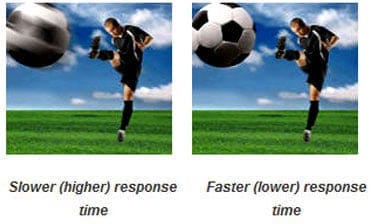
It’s important to have the right monitor for your gaming needs. Make sure you’re getting one with a response time and refresh rate in line with what best suits each game style, but also take into consideration how fast an image should appear on screen so do some research before making this purchase.
| Factor | Response time | Refresh rate |
| Range | 5 milliseconds or below | 75 Hz or above |
| Scale | Lower is better | Higher is better |
| Sweet spot | 1 ms | 144 Hz |
Also Read: What Is The Best Response Time For A Gaming Monitor? 7 Best Ways To Find Out
2. Refresh Rate
Most gamers know that the frames per second (FPS) are what we look out for. But, many people don’t realize how important refresh rate can be in gaming and it’s actually much more than just an indicator of graphics quality. When it comes to monitoring refresh rates, you can choose from 60Hz or higher. For those looking for an even more accelerated gaming experience with less lag time between actions and graphics-based content on the screen, there are also monitors that boast 144Hz and 240 Hz displays.

The refresh rate of a screen determines how fast it displays new images. For example, some gaming monitors have up to 360Hz and 4K resolution with 60 Hz maximum refresh rates which makes them best suited for gamers looking at fast-moving objects or realistic games where quick decisions need to be made but not so good if you want smooth animation without any lag time between actions happening on your computer screen.
| Factor | Response time | Refresh rate |
| Range | 5 milliseconds or below | 75 Hz or above |
| Scale | Lower is better | Higher is better |
| Sweet spot | 1 ms | 144 Hz |
You want to make sure that your monitor has the best response time and refresh rate for gaming. This will allow you to achieve an optimum experience while playing, so check which range is right up against those numbers.
3. Screen Resolution
The screen of a monitor is measured in width and height. For instance, an industry-standard Full HD 1080p resolution means that the device has 1920×1080 for each dimension which makes it generous enough to view all your favorite shows or games without any issues with clarity.
The resolutions of today’s video games are varied, with gamers opting for different options depending on what they plan to play. For instance, 1440p is popular among those looking at the best performance and visuals possible. If you’re looking to play games with stunning visuals like in 4K/2160p then your best bet would probably be one of those higher resolutions.
Also Read: What Is The Best Resolution For Gaming? 8 Significant Ways
4. Input Lag
The input lag on a monitor is the time it takes for your screen to display an image after receiving data from its source. Most monitors have low enough lags that you won’t notice any delay during regular desktop use, but competitive gamers need as little wait in between button presses and reactions while playing games where every millisecond counts.
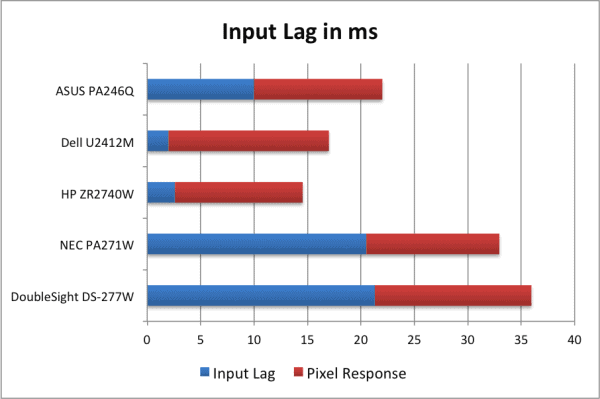
To ensure a great gaming experience, make sure you get the monitor with less response time and lower input lag. Remember that your mouse or keyboard also needs to have low lags for optimal performance in-game as well. Check out the input lag of different brands! It’s important to get a monitor with low response time and short pixel delays.
5. Panel Type
The three most common types of panels used in monitors are TN, VA & IPS. Each has its advantages and disadvantages so it’s important to consider which one fits your needs the best before making a purchase decision.
| Aspects | Panel Type | ||
| TN | VA | IPS | |
| Response Time | 1ms | 1 – 4ms | 4 – 10ms |
| Viewing Angle | Limited | Better | Excellent |
| Image Quality | Poor | Good | Excellent |
If you are looking for a screen that has a fast response time, then the TN panels will be your best option. However, they come at the expense of color reproduction and viewing angles which make them less ideal when considering all aspects of gaming or watching movies on YouTube etcetera with other technologies available now like VA panel screens where color accuracy isn’t sacrificed so much because these types can still achieve reasonable levels while offering good visibility.
The perfect gaming viewing angle is about 15 degrees for monitors and 30° when it comes to TV sets. The best spot in your home that has an easily adjustable desk chair can provide you with this great perch, which will allow a more immersed gameplay experience than any other position out there.
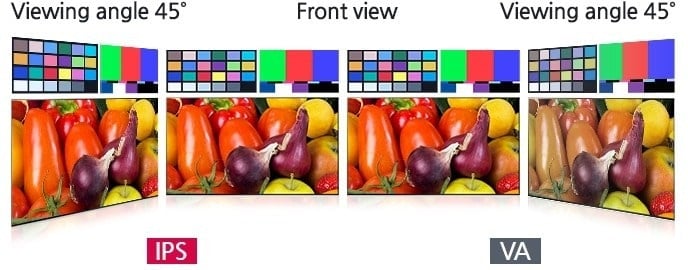
The best gaming monitors are not the kind that gives you a wide view, but they’re expensive and have low refresh rates. The cheaper alternatives like TN or VA panels can still produce great images at higher resolutions without some of these problems in mind.
6. Monitor Size
With the variety of screen sizes available, you’ll be sure to find one that fits your needs. The prices range from less than 21 inches all the way up to well over 30-inch screens and they are priced similarly according to what size is needed.
The best monitor size for gaming is 27 inches because it offers the perfect combination of screen resolution and aspect ratio to give you an unparalleled experience. The more common 1080p – 1440 resolutions work perfectly on this particular form factor too. If we sit less than three feet away from our monitors (which most gamers will), then I recommend either a 24″ or 26-27 inch panel depending upon how close your seating position is.
When it comes to choosing a monitor for gaming, there are many things that you should consider. First and foremost is your screen resolution preference; we recommend 21-24 inches if the graphics will be intense enough on this size of device or 27″-32″.
Also Read: What Is The Best Monitor Size For Gaming? 3 Significant Factors
7. Aspect Ratio
Widescreen monitors are the norm for gaming, but if you want to be more specific about what kind of screen size and aspect ratio will work best with your needs then there’s plenty out on the offer. The standard widescale have 16:9 aspect ratios which most gamers prefer when playing games in general.
This means that all sides or pieces within each image must match up exactly by width rather than height like old school 4:3 screens do where some parts may come over shorter than others due to how they’re cut off at both ends (eek!). 24″ & 27-inch models also share these same qualities so decision-making should not prove too difficult.
| Aspect Ratio | Monitor Sizes |
| Standard Widescreen (16:9) | 24″ 27″ 32″ |
| Ultra-Wide (21:9) 30% wider | 29″ 34″ 38″ |
| Super Ultra-Wide (32:9) 2x wider | 43″ 49″ |
Ultra-Wides and Super Ultra widen your game with an immersive experience. For a wider mode, you need high powered PC configuration to run them properly though.
Also Read: Are Ultrawide Monitors Worth It For Gaming? 7 Best Ways To Find Out
8. Design
You can find the radius of your curved monitor by taking a look at its curvature. Curves are measured in millimeters and there’s an option for you to choose from depending on how much curve they want; 1800R, 2300R (or another number) or 3000+, etcetera. So what does this mean? The smaller numbers will give greater curves.
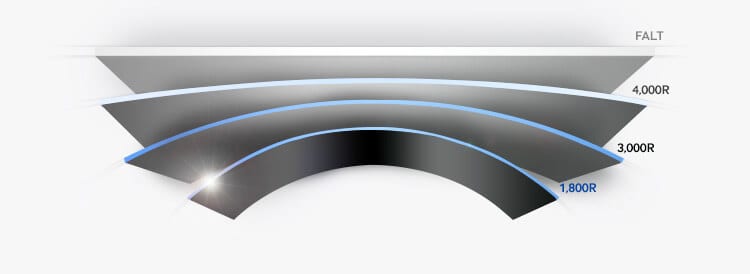
Curved monitors come in all different sizes and shapes. The curvature limit for a particular model depends on its size, with 24-inch screens having a diameter of only five inches while the largest available models can stretch up to 32+”.
| Factors | Curved | Flat |
| Color consistency across multiple viewing angles | Better | Less effective |
| 3D depths without the headache | Better | Less effective |
| Eyestrain | Less | Normal |
| Fast-paced gaming awareness | Better | Less effective |
| Headaches for longer screen time | Less | Normal |
| Immersive gaming experience | Better | Less effective |
| Larger field of view | Better | Less effective |
| Price | High | Normal |
| Screen reflection chances | High | Normal |
| Space required on the desk | High | Normal |
| Wall mount | Less effective | Easy |
| Work involves straight lines | Less effective | Easy |
Also Read: Is A Curved Monitor Worth It For Gaming? 7 Best Ways To Find Out
Can I use a gaming monitor as a regular monitor?
Yes, You can use a gaming monitor as a regular monitor. The primary use of a gaming monitor is to have the quickest possible picture appear before your eyes, and this one will not disappoint. Professional gamers know that milliseconds count when it comes down to competing in competitions with other players so if you plan on using yours primarily for watching videos or personal use then it works well.
Can you use a gaming monitor for PlayStation or Xbox?
The best gaming monitors on the market will offer better motion performance and lower input lag than any TV you can buy, which is great for competitive online gamers. 4K options are available if your gaming console has sufficient power or 1080p ones in standard models only but both provide unparalleled visuals.
Also Read: TV vs Monitor For Gaming? 10 Ways To Choose The Best
Can a gaming monitor be used for work?
The gaming monitor is a workhorse, capable of doing everything from playing games to presenting slideshows. These high-end displays offer fast refresh rates and great color accuracy in both grayscale and colors so you can get all your work done without any problems!
What to consider when buying a gaming monitor?
When it comes to choosing the best gaming monitor, there are many things that you should look for such as screen resolution, display size, refresh rate, response time, current gaming platform, panel type, widescreen or ultrawide, flat or curved, adaptive sync, HDR, and ports options.
Also Read: How To Choose A Gaming Monitor? 11 Best Factors To Consider
Best gaming monitors
We have compiled a list of the top 5 best gaming monitors based on our experiences. We only include high-quality products in this article because they offer much more performance, features, and customization options than other monitors.
We’ve added our recommendations along with pros and cons for each of the 15 gaming monitors that will give you some idea about them. You can check it out all on our recommended products page.
| Name | Panel Type | Screen Type | Refresh Rate | Response Time | Adaptive Sync | Our Recommendation |
| Samsung Odyssey G7 | VA | Widescreen Curved | 240Hz | 1ms | G-Sync | Read More |
| Alienware 25 | TN | Standard Widescreen | 240Hz | 1ms | G-Sync | Read More |
| ViewSonic Elite XG270 | IPS | Standard Widescreen | 240Hz | 1ms | G-Sync | Read More |
| Acer Nitro VG271U | IPS | Standard Widescreen | 240Hz | 1ms | G-Sync | Read More |
| Sceptre C305B-200UN | VA | Ultrawide Curved | 200Hz | 5ms | FreeSync | Read More |
Best budget gaming monitors
These are the top 5 best gaming monitors based on our experiences. All of these have a very fast response time and adaptive sync feature that helps to eliminate screen tearing or stuttering for smoother gameplay! Most come under $450, so you can afford them without breaking your bank account in order to get quality equipment like this great asset towards enhancing your gaming experience.
| Name | Panel Type | Screen Type | Refresh Rate | Response Time | Adaptive Sync | Our Recommendation |
| MSI Optix G24C | VA | Standard Widescreen | 144Hz | 1ms | FreeSync | Read More |
| Sceptre C305B-200UN | VA | Ultrawide Curved | 200Hz | 5ms | FreeSync | Read More |
| Aorus G27FC | VA | Widescreen Curved | 165Hz | 1ms | FreeSync | Read More |
| Acer Nitro VG271U | IPS | Standard Widescreen | 240Hz | 1ms | G-Sync | Read More |
| ViewSonic Elite XG270 | IPS | Standard Widescreen | 240Hz | 1ms | G-Sync | Read More |
So, what is the difference between gaming monitor and regular monitor? The answer to that question really depends on your needs as a gamer. If you want a monitor that will give you an edge in competitive gameplay, then you need a gaming monitor. However, if you just want a great all-around monitor for work and play, then any standard LCD or LED monitor should do the trick. Let us know in the comments which type of monitor you prefer and why.
